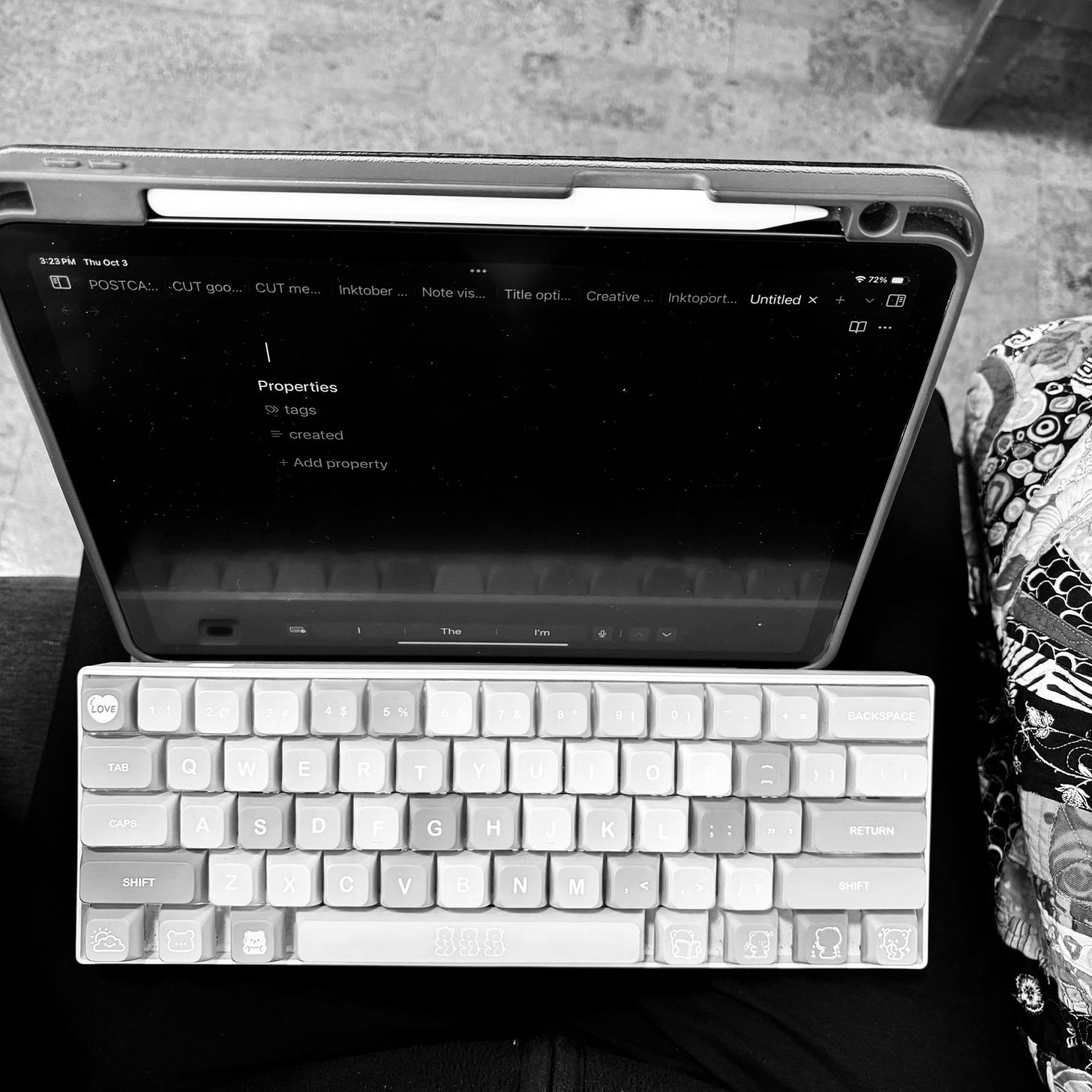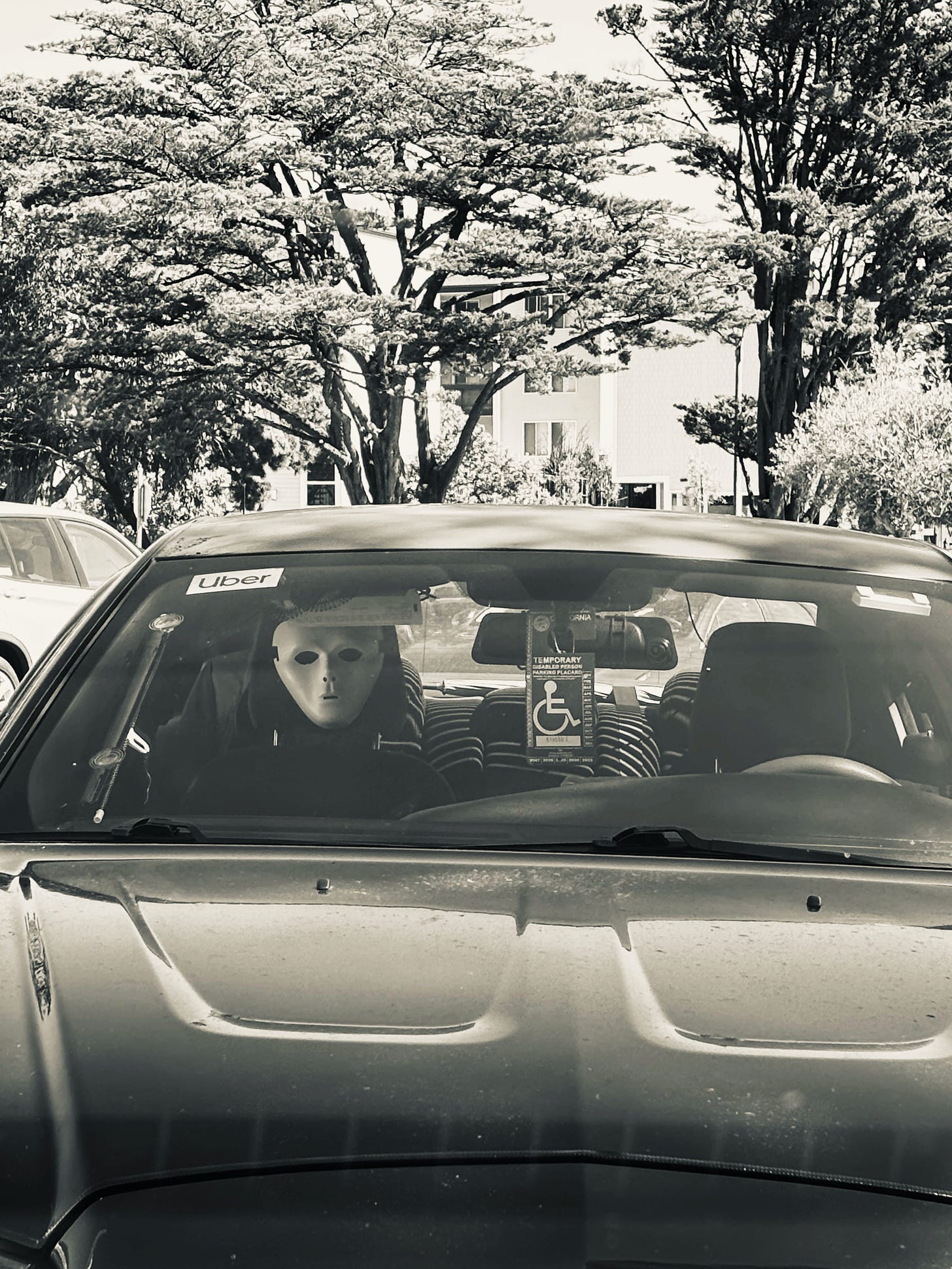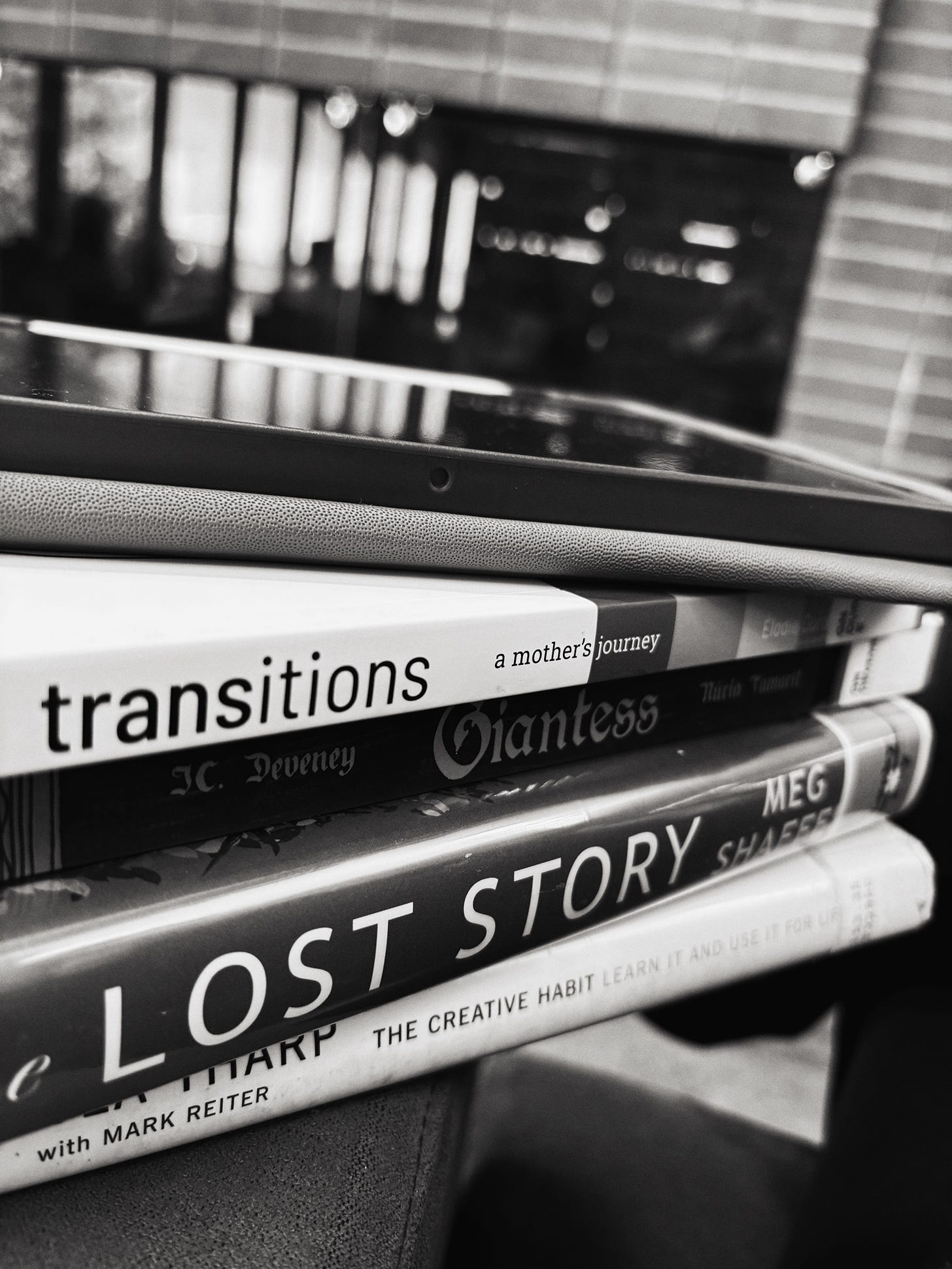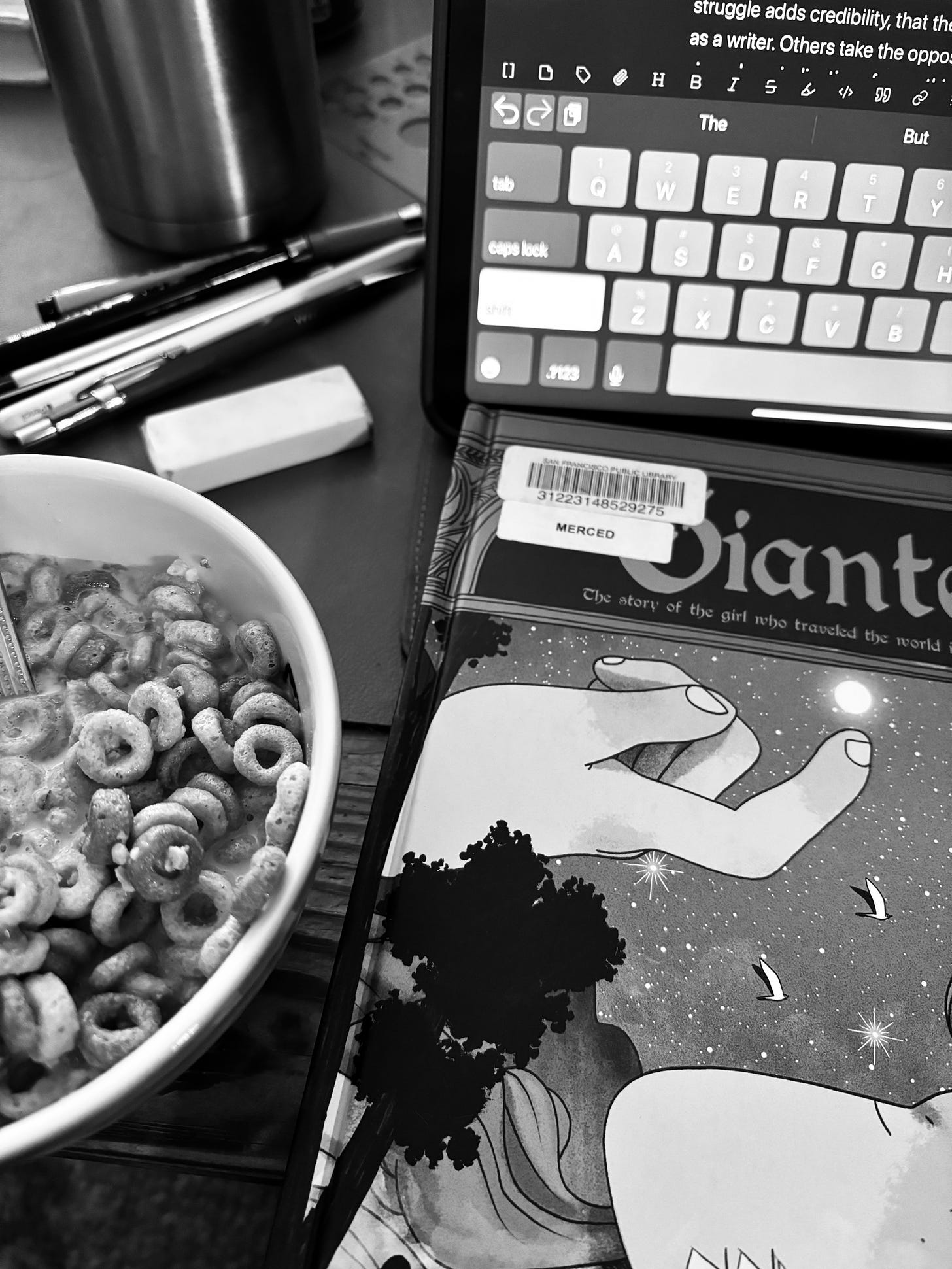Today’s letter is an advocation of reducing creative friction but also a recognition of friction as a necessary force, something that requires balance. There is a missing pencil, too.
“Before you try to increase your willpower, try to decrease the friction in your environment.” - James Clear
Happy Sunday!
It’s been a weird week. The curtains are closed, a weak attempt to keep out the heat. But in the face of everything going on everywhere this week, this is trivial.
Today's letter, like one a few weeks ago, has been sorted and shifted and rearranged and is, really, just beginning to take shape, just beginning to find its sequence and points of connection.
I appreciate you as readers. I intended this to be a short post with a list, the kind that gives you clear steps for improving your relationship with friction. My hope is that list will follow next week. There is too much, and I will opt for the lyrical piece every time.
I ran into a phrase this week that became a fulcrum, a central axis around which words started to coalesce. At first it seemed clear, a stone to polish, a paperweight to hold things in place, until it bloomed, light radiating in multiple directions, no longer solid as a stone, the formation of a galaxy. But maybe that is the wrong direction, the explosion of light from a prismatic center, light bending, refracting, and spreading. At the center of our galaxy is a massive black hole, a pulling in.
Even here, saying hello and trying to explain the winding road ahead, I feel the tension and the torque. Something was put into motion this week, something intriguing, something raw, and yet something perfectly contradictory, something that defies easy answers.
Creative thought, science, philosophy, and personal history collided.
I’ve sat pondering the fragments as they drift, moving in and out and around, gravitational pull keeping things in motion, though seemingly weightless. I got lost in the muddle but can only embrace this disorientation, unsure if I am rooted on the ground or floating in the unknown.
Things are so rarely either/or.
This letter does involve a repetition of a small thread, a thread that isn't overly important in and of itself, but there is something to ponder in the juxtaposition, in what is forgotten and what is remembered. Friction appears in many forms.
As always, you can jump around, but if you reach the end and haven't thought about friction, sea glass, tribology, and the dissolution of stories that assume creativity has to be a "struggle" to be valid, then you've missed something. That is also okay.
1—Nexus, 2—Pencil, 3—Valuation, 4—Tribology, 5—Dominoes, 6—Erosion, 7—Vibration, 8—Sea Glass, 9—Low Friction, 10—Pencil, 11—Penelope, 12—Pantry, 13—Struggle, 14—Flow, 15—Knees, 16—Acceptance, 17—Cape, 18—Balance, 19—Order, 20—Friction, 21—Sitting, 22—Pencil, 23—Stairs, 24—Systems, 25—Teeth, 26—Pencil, 27—Wheels, 28—Pencils1
[Update: After letting this post sit for a few days, I have moved a number of the sections to a paywalled post. Thank you for your understanding.]
These posts are often hard to wrangle in terms of shape. I think I need a monitor the size of a wall to be able to see the flow.
Thank you for reading.
Amy
🎯 The Sunday post is free to all readers. Thank you to those who have upgraded their subscriptions or made a donation. I believe in the value of the time we spend on our creative habits and routines.
This post is long and has multiple images. For the best viewing experience, use the app or view in a browser.
💜 It makes a real difference when you click like, leave a comment, or restack a post.
1—Nexus
I had a video on in the background this week while working. I had been puzzling over something in my writing tool, trying to sort out if there is a way to make a certain feature work with the mishmash of information I have. The problem isn't about friction. It's about data visualization, me reaching for both beauty and insight, for clarity moving forward even as I pour years of writing into the space.
Looking for a missing clue, I pulled up a video, and before I even got switched back to the main window where I was working, I heard “blah, blah, blah… frictionless creativity."
I spent the next few days making and losing notes.
I spent the next few days chasing rabbits.
I spent the next few days sifting the science, which kept expanding, everything connected and then, yes, everything connected as the realities of human loss, of regret, of memory all began to shimmer as related, relevant, important.
Something conceptual was set in motion this week, and it's bigger than the space I have here. It's bigger than the time I have to carefully prune it for today, to fill in all the nooks and crannies that have turned on their lights.
I stopped what I was doing when I heard the phrase in the video and immediately wrote it down.
That's what I'm after, frictionless creativity.
It's what I encourage for all of us, simple ways to reduce the friction so that creative habit is seamlessly woven into each day.
Reducing creative friction is something I have prioritized in dozens of ways in the last many years. It's something I believe in. Reducing friction is sometimes about making, fostering, finding, carving, and nurturing smarter, better, more logical, personalized systems. Reducing creative friction blends the practical with the individual. Reducing creative friction can help you find and maintain a creative habit you love, one that you find fulfilling and mindful, one that is more than just a wish.
That was the nexus.
But I quickly realized that a discussion of friction, stripped from its creative anchor, can go both ways. I started drawing lines, connecting dots, and looking for parallels that support the value of reducing friction. There are many, but I also found myself with examples from these last few months where reducing friction has not been the best choice.
A discussion of friction is not simply a discussion of removing friction.
Friction matters.
2—Pencil
I have been looking for my pencil. I honestly can’t even begin to fathom how many times I have been looking for my pencil or pen or pencil sharpener or eraser in all the years that I have been talking about creative habit and mapping my margins.
I waste a lot of time looking for things. This is a point of friction.
3—Valuation
I appreciate creative habit, but I recognize it looks and feels different for each of us.
I don’t value things simply because they took longer. I don’t value things simply because they were done quickly. I am immune to people arguing something is better because it fit into a 90-second or 3-minute window or better because there was angst involved in the process.
I don't play eraser versus non-eraser games. It's personal. Sometimes I do. Sometimes I don't. For me, it typically means something one way or another, something about my mindset at the time, something about what I need to embrace or hold gently, but I have no interest in telling you what matters for you.
I do want you to cultivate a creative habit, carve time in your day for at least a few minutes of writing or art, and believe in the value of this process as a positive, nurturing, and balancing factor in your life.
What shape that really takes for you...is up to you. You need to find and understand your why. But you don’t have to be a tortured artist or writer for art or writing to have meaning, to be part of how you view the world and how you understand yourself.
Where did we get this idea that the story we need to tell about what we do has to be one that emphasizes struggle in the act of creation?
There is a lot to be said for reducing friction, for finding ease, for encouraging mindfulness.
4—Tribology
Tribology is the study of friction, wear, and lubrication.
Tribology means "to rub."
In thinking about friction, I listened to a TED talk with Jennifer Vali, a tribologist.
I say that I connect dots. She says she rubs things together. She talks about looking at the world through a tribological lens.
"I promise you, discovering tribology changes your experience with the physical world," she says.
Tribology may change our experience of reality, I think.
"I think you'll be surprised at how significant a little bit of tribology can be in alleviating some very large problems," she says.
5—Dominoes
The story I might tell is of setting up thousands of dominoes, of starting back at the beginning of the line or the spiral each time, straightening, shifting, broadening the reach, making tiny adjustments, changing the spacing and the shape to allow more dominoes.
Sometimes there is a slip of the hand, a breath that carries the truth, a twitch, and they fall. I look at their resting pattern and move back to the beginning. Sometimes, I watch them fall, hear the rustle, the clatter building as the chain gathers speed. I smile, and I wonder if next time I will arrange them exactly the same, knowingly or not, or if they will take a completely different shape.
When working with thousands of dominoes, with lifetimes of moments, with a galaxy of stars, it is often impossible to see the shape, impossible to gain enough distance to see the whole at one time.
Starting over again and again is daunting. Starting over again and again is exciting.
6—Erosion
The more you learn about fiction, the more you think about erosion. The more you think about the fact that friction is about the interaction between two surfaces that are in motion, the more you think about the tumbling of sea glass through the ocean, the more you think about the transfer of electrons when charged items come in contact and you end up with hair standing on end or a spark, the more you think about human contact.
7—Vibration
A few years ago, when we thought there was a chance of getting out for short walks, continuing newfound momentum, nurturing hope, we bought rugged, oversized wheels for the walker. We changed the small wheels for giant wheels with treads that looked like toy Tonka trucks and cheerful blue interiors and drove to a nearby concrete loop to walk.
Rather than distributing, absorbing, or reducing the friction, the wheels transferred every single vibration, the sharpness of every single rock. The momentum stopped there. Friction made the experience untenable.
8—Sea Glass
Sea glass begins as broken glass, discarded in the ocean.
The friction between sand and water and glass wears down the edges, similar to the way rocks erode over time.
9—Low Friction
When it comes to streamlining a creative life, I’m all about low friction. I don’t think excess friction is a requirement for a fulfilling creative habit. I don’t think weaving a creative habit that feels like a safe space makes me less legitimate as a writer.
10—Pencil (History)
I keep thinking the pencil will fall out of a bag or just magically appear on the table in front of me. It’s a pencil from my high school years. At least that’s what I think. I don’t know exactly when I was given this pencil, and so I have to fill in the story about it using what I think is true because I am pretty sure that my grandfather gave it to me.
Among the things I carried along through the many years and iterations of self between high school in Appalachia and now are two pencils, one gold and one silver. Both have my initials or my name on them. They speak to a time and a place. They make me think of those little purses with the wooden handles and the replaceable, button-on plaid covers, of things that were monogrammed.
11—Penelope
I think that the story I tell, always tell, and have been retelling for years is more along the lines of Penelope. Her story has always been my story, the weaving and the unweaving. The deliberate manipulation of warp and weft, the willingness to begin again and again and again.
12—Pantry
The pandemic and some small mystery bug outbreak in the heat of the years before left us with an unsightly but functional makeshift pantry in the living room. The wire shelves bow under the weight of canned chicken, chickpeas, and jars of green salsa.
These shelves reduced friction.
13—Struggle
We see a lot of stories of creative angst, of creative struggle, of the martyrdom of the creative process, the hero’s quest, the journey in the snow to find the cozy cabin, to escape the realities of the world, to wrestle thoughts into shape and onto the page.
The process is not the same for everyone.
Creative habit does not have to be a struggle to be valid and meaningful.
I am interested in that cabin, in that snowy scene, in that process of weaving words and reigning in their undulating forms for at least one reading, one draft frozen in time before the shifting begins anew, drafts as snowflakes, carefully cut, strung, and hung in the window where the light will shine through, where they retain some of what may be lost in other versions, some spin on the truth, on the ineffable.
Stories of creative angst are often underdog stories, the small slingshot turned into a goblet turned into a pen we hold against the giant, amorphous, swirling pool from which we draw meaning.
Friction creates the plot—The Herculean effort, the battle scars, the words torn from skin.
14—Flow
Reducing creative friction is about minimizing distractions, reducing barriers to entry, setting up systems and spaces and routines that remove or smooth the edges and invite you in. Maybe you find whispers of flow or maybe you find a lullaby, something that calms and nurtures.
15—Knees
Knee problems don't kill you, but the sound of the bones rubbing against each other increased exponentially in the last year, the grating, the crunching, the sound of the floor creaking, and yet it wasn’t the floor.
"Even the smallest shift in your seat involves two surfaces moving relative to each other." It's individual. We each have variables that impact how smooth or how resistant this shifting is.
16—Acceptance
It is okay to line things up in a way that minimizes stress, that streamlines the journey, that sets you up for a rewarding or fulfilling or mindful experience. It is okay to reject the idea that struggle is a required foundation. It is okay to find joy in the process.
After sitting for several days, most of the remainder of this piece has been moved to a private post. The pieces that remain here still form a story of their own.
17—Cape
18—Balance
19—Order
20—Friction
21—Sitting
22—Pencil (Lost)
23—Stairs
24—Systems
25—Teeth
Brushing your teeth is tribology.
26—Pencil (Timing)
I haven’t found my pencil yet. I’m a creature of habit. Once I have a favorite, I stick with it (a la the one cup, which I have to admit looks worse than ever).
I know the pencil was out at the beginning of summer. Even though I hadn’t been using it, I remember it being out, visible, in the mix of pens and pencils that are always scattered, ready, waiting, a form of reduced friction.
Of course, a lot of things happened this summer. There are papers everywhere. There are things sitting in piles. Mostly, nothing has changed, or the changes are so incrementally small that they are imperceptible.
I keep standing in front of shelves and bookcases, opening and closing drawers.
27—Wheels
28—Pencils
I sort of think that now that I’ve talked about it endlessly, it will appear. The Universe is sometimes good like that.
Weekly Photos
Just a few photos that capture texture from the week.
Weekly Bits and Pieces
Made It?
Thank you for reading. I appreciate your comments. Let me know what stands out for you, what you think after reading, or where we connect.
Galaxy or weeping willow for the spreading of it all
Graphite if you have a favorite pencil (tell us about it); nib if the very idea offends you
Squash if you spend too much time looking for things
Butternut if you look for ways to make your creative habits easy to slide into
📝 I have been sharing daily portraits of Substack writers in Notes as part of an Inktober / Inktoportraits series for October. You can see some of the portraits here.
📬 Thank you to those who commented on the Postcard Prompt Series last week. I love that so many of you expressed interest. I know some of you have already made your card, which is wonderful. I encourage you to share your card (or a glimpse, if it’s private, as private as a postcard can be) at Instagram (or here in Notes) with #postcardprompts. Thank you to PRINT magazine for inviting and sharing this series.
Thank you for reading Illustrated Life. Writers need readers, and I am grateful for every reader!
Paid options are available for those who can and want to support Illustrated Life, the podcast, and the weekly #illustrateyourweek prompt series. Subscriptions not your thing? One-time donations are always appreciated.
The Substack editor had fits today with the internal links and also will not allow a jump link to a number. Two sections that differ only in their number also can’t be independently linked. I intended the sections below to be numbered only—not titled. Apologies if the links don’t work.









"Creative habit does not have to be a struggle to be valid and meaningful." Love that. I always thought there had to be struggle to give the creative habit/process meaning, importance. I used it as an excuse to not even get started. I'm glad I've lost that judgment. I jump in with a thought to play, even when writing something weighty, serious. Play, curiosity, gaining knowledge. Those three ideas inspire me to be less afraid to fail. It's been a great shift of mind for me.
I once read somewhere that the poet William Carlos Williams, who was a practicing pediatrician, had a typewriter that he'd pull out from a drawer in his desk, and that he'd write in between seeing patients. I don't know if it's true, but I always found it inspiring. My life happens. I go food shopping, work at my job, run errands, see doctors, make dinner, socialize (or not). Sometimes the writing comes easily amidst it all, frictionless. Sometimes it feels like an existential struggle. Same set of circumstances. For me, friction is mostly internally generated. The wonderful thing about that is that's where I can look to make changes, too.